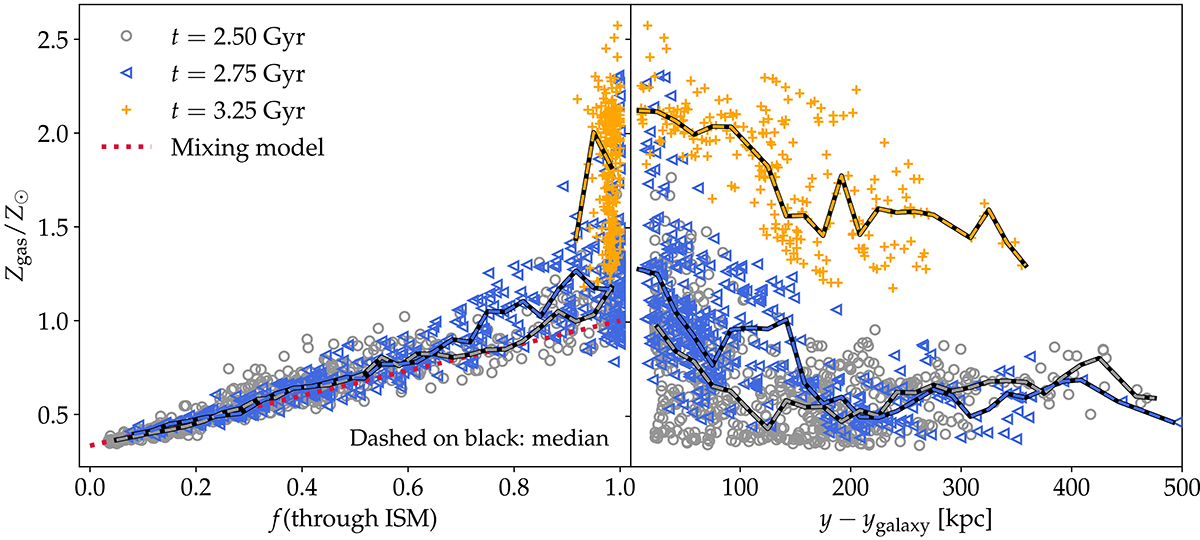Fig. 5.

Download original image
Gas metallicity of the clumps in the tail. The clumps are shown as different symbols denoting the different analysis times. Left panel: Gas metallicity as a function of the mass fraction of gas that at some point during the simulation has resided in the jellyfish galaxy’s ISM. During infall (2.50 and 2.75 Gyr), there is a correlation between these two quantities. This indicates that the metallicity of the jellyfish tail is influenced by mixing of high-metallicity ISM gas with low-metallicity gas from the CGM and ICM. We quantified this with a ‘mixing model’, ![]() , that assumes that the ISM metallicity does not evolve. After the closest passage in the cluster (3.25 Gyr), a clear majority of the gas in the tail clumps has resided in the ISM during the simulation, and we observed a higher metallicity than predicted by the non-evolving mixing model. Right panel: Plot of the metallicity as a function of distance downstream from the galaxy. We found a declining trend after the central passage. Before the central passage, we also observed a decreasing trend in the immediate tail within ≲80 kpc of the galaxy. This is a signature that mixing is more important further downstream than in vicinity of the galaxy.
, that assumes that the ISM metallicity does not evolve. After the closest passage in the cluster (3.25 Gyr), a clear majority of the gas in the tail clumps has resided in the ISM during the simulation, and we observed a higher metallicity than predicted by the non-evolving mixing model. Right panel: Plot of the metallicity as a function of distance downstream from the galaxy. We found a declining trend after the central passage. Before the central passage, we also observed a decreasing trend in the immediate tail within ≲80 kpc of the galaxy. This is a signature that mixing is more important further downstream than in vicinity of the galaxy.
Current usage metrics show cumulative count of Article Views (full-text article views including HTML views, PDF and ePub downloads, according to the available data) and Abstracts Views on Vision4Press platform.
Data correspond to usage on the plateform after 2015. The current usage metrics is available 48-96 hours after online publication and is updated daily on week days.
Initial download of the metrics may take a while.


